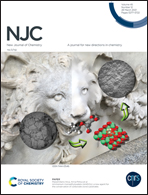KCl-assisted activation: Moringa oleifera branch-derived porous carbon for high performance supercapacitor†
Abstract
The effective preparation of high porosity carbonaceous electrode materials is a critical and challenging issue for obtaining superior supercapacitors. In this work, a novel KCl-assisted KOH strategy is developed for the preparation of Moringa oleifera branch-based porous carbon materials (PCMs). Benefiting from the liquid environment of in situ formed molten salts, KCl-assisted KOH activation can effectively decrease the usage of KOH, and thus increase the yield of PCMs from 9.8% to 15.6% whilst maintaining their high porosity. Therefore, the obtained PCMs possess a high specific surface area (i.e., 2314–3470 m2 g−1) and pore volume (i.e., 0.94–1.69 cm3 g−1). When used in supercapacitors, a typical PCM electrode exhibits a high capacitance of 421 F g−1 at 0.5 A g−1 and with an excellent cyclic stability of 4% capacity decay after 20 000 charge/discharge cycles in 6 M KOH electrolyte. Additionally, a maximum energy density of 33.0 W h kg−1 can be achieved at 224.0 W kg−1. This attractive electrochemical performance shows PCMs to be a promising material for use in supercapacitors. Furthermore, this research provides a cost-effective and promising route for the preparation of porous carbon with high porosity.



 Please wait while we load your content...
Please wait while we load your content...